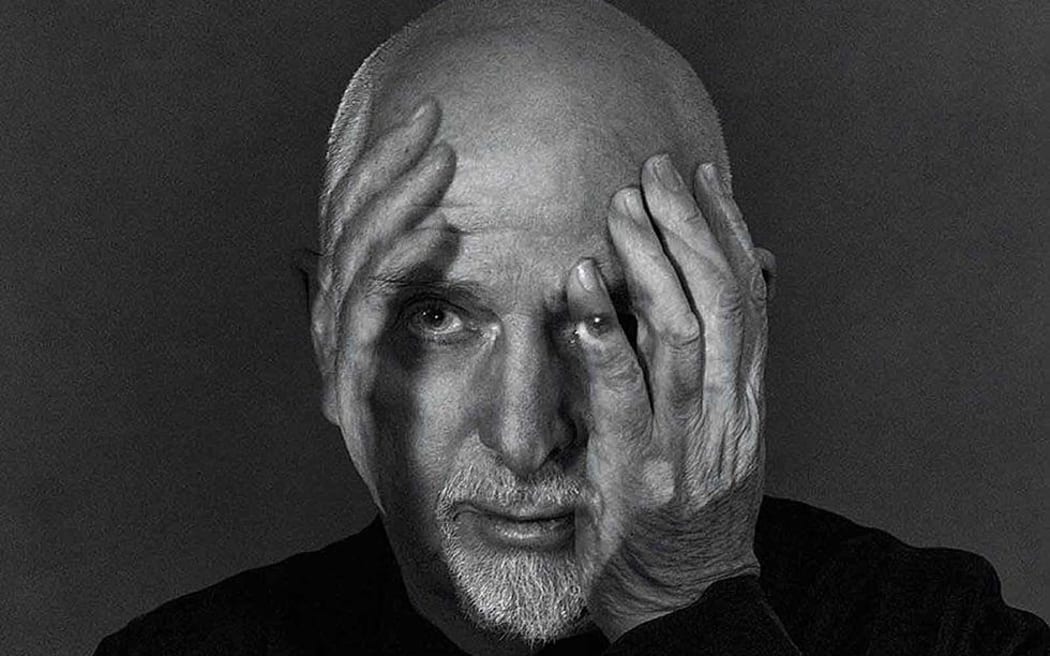
Photo: Supplied
Peter Gabriel’s tenth studio album was originally planned for release in 2004. Stories about the album’s many delays orbit its release, but basically boil down to the artist’s perfectionism, as well as the two records he released in the meantime: one a selection of covers, one featuring new versions of old Gabriel songs.
He wound up working on i/o for around twenty years, and now the album - the result of a lot of tinkering, and a musician to whom financial outlay is of less concern - is here. The idea that indecision played a part in its gestation is born out in the results, which arrives in three different versions.
For audio brains, comparing the different mixes is a fascinating exercise, but there’s plenty here for casual fans too: the man is still a dab hand at songwriting.
In ‘Olive Tree’ that specific fruit is never actually mentioned, but it carries connotations of peace, a backdrop for Gabriel’s chorus lines about warm sun, cool breeze, and water.
There’s something about those horn blasts that feels very 1980s pop to me, albeit lacquered in modern day production sheen. And that’s not a bad thing at all - for fans of Gabriel during his heyday, there’s ample proof he’s still channelling the same muse.
‘Road to Joy’ shimmies along a bed of lateral funk, bringing with it a wave of nostalgia: this is clearly the same guy who made ‘Sledgehammer’, ‘Big Time’, and ‘Steam’.
Three mixers worked on three different-sounding versions of this album: Mark ‘Spike’ Stent, who’s worked with names like Madonna and U2, helmed the ‘Bright-Side Mix’, Tchad Blake, who holds a similarly daunting number of credits, from Sheryl Cow to Suzanne Vega, is responsible for the ‘Dark-Side Mix’, and Hans-Martin Buff tackled the third, the ‘In-Side Mix’ in Dolby Atmos surround sound.
Getting into the differences between those first two in particular would require a lot more time and words.
When I heard the lyric “you got your pictures all laid out on the grid” in 'The Court', I thought of social media, and the line “you got the data, don't control where it goes”, suggested the song was about online data collection. But as these songs were released one by one, with an accompanying quote for each one, I know it’s actually about the imposed nature of the justice system.
Similarly, the song ‘Panopticom’ suggested a merging of panopticon, a prison where all inmates can be monitored by a single guard, and dot com. I thought Gabriel was critiquing the internet, but the truth is much more positive.
He says it’s based on the idea of an “infinitely expandable accessible data globe… to allow the world to see itself better”.
The album’s title, i/o, refers to input/ output, with the song of the same name having lines about “stuff going in, and stuff going out”, and reflects a distinctly mature viewpoint from Gabriel, about the interconnectivity of everything.
The i/o cover art shows Peter Gabriel with head in hands, his fingers merging with his face. Plenty of online wags have suggested this represents him agonising over the details of this album - it did take 20 years to make - but I suspected it might represent his dismay at the state of things. That was unfair of me though, and the album shows an artist at peace; mellowing with age, even.
There’s so much more to talk about, from its co-producers Brian Eno and Richard Russell, who founded XL Recordings, to its release schedule (a new song on each month’s full moon).
The credits reveal an absolute army of guest musicians: close to a hundred, if you count the Swedish male choir that features, and the Soweto Gospel Choir. It sounds like an album that took a lot of time, and a lot of money, which is what it is. But Gabriel has earned that right, and he’s still in fine voice, with the finely-tuned songs to match.

